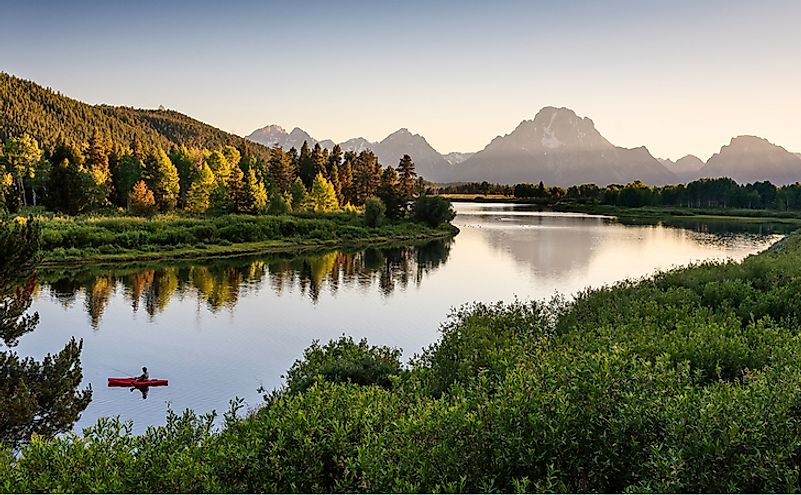Where Does The Snake River Begin And End?

The Snake River is one of the largest rivers in the northwestern part of the US. It spans a length of 1,078 miles from its source to its mouth, and it is the largest tributary of the Columbia River. The drainage basin of the Snake River covers part of six states in the US. The volcanic hotspot, which is currently lying underneath the Yellowstone National Park, is believed to have created the Snake River plain. The massive glacial retreat flooding, which was experienced during the last ice age, is believed to have carved out cliffs, canyons, and waterfalls, particularly in the middle and lower part of the Snake River. The two major catastrophic flooding events which are believed to have significantly affected the river and its surrounding area are the Bonneville floods and the Missoula floods.
The Source Of The Snake River
The Snake River begins its journey from the western side of the state of Wyoming and flows across the Snake River Plain in the southern part of Idaho. The river then flows along the Oregon-Idaho border before entering the state of Washington and finally pouring its water into the Columbia River at the Tri-Cities. The Snake River is the 13th longest river in the country, while its watershed is the 10th largest in the US, covering about 108,000 square miles. Its watershed covers parts of six states in the country, which include Washington, Oregon, Utah, Nevada, Idaho, and Wyoming. The more significant part of the Snake River watershed is between the Columbia plateau on the Northwestern side and the Rocky Mountains on the Eastern part.
Tributaries Of The Snake River
The largest tributary of the Snake River is the Clearwater River, which discharges approximately 11 million acre-feet of water every year. The second-largest tributary is the Salmon River, which discharges approximately 8 million acre-feet of water every year. The tributaries found between the source of the river and the border between Wyoming and Idaho include the Heart River, Lewis River, Gros Ventre River, Hoback River, Greys River, and Salt River. Tributaries joining the river between Snake River Plain and Hells Canyon include Henrys Fork River, Portneuf River, Raft River, Malad River, Salmon Falls Creek River, Bruneau River, Boise River, Owyhee River, Malheur River, and Payette River. The tributaries joining the river between Hells Canyon and Idaho-Washington border include Weiser River, Burnt River, and the Grande Ronde River As well as Salmon River and the Clearwater River. Only two rivers are joining the Snake River between the Idaho-Washington border and its mouth on Columbia River, and they are the Tucannon River and Palouse River.
Pollution In The Snake River
Some of the pollutants that find their way into the Snake River include agricultural runoff from the ranches and farms found in the Snake River plain. These pollutants have severely affected the ecology of the river, especially throughout the 20th century. Manure, fertilizers, and other chemical pollutants were washed into the river and significantly increasing the nutrient load, particularly of nitrogen, fecal coliform, and phosphorus. Algae bloom is prevalent during low water levels, and they were responsible for the depletion of oxygen in the water.











